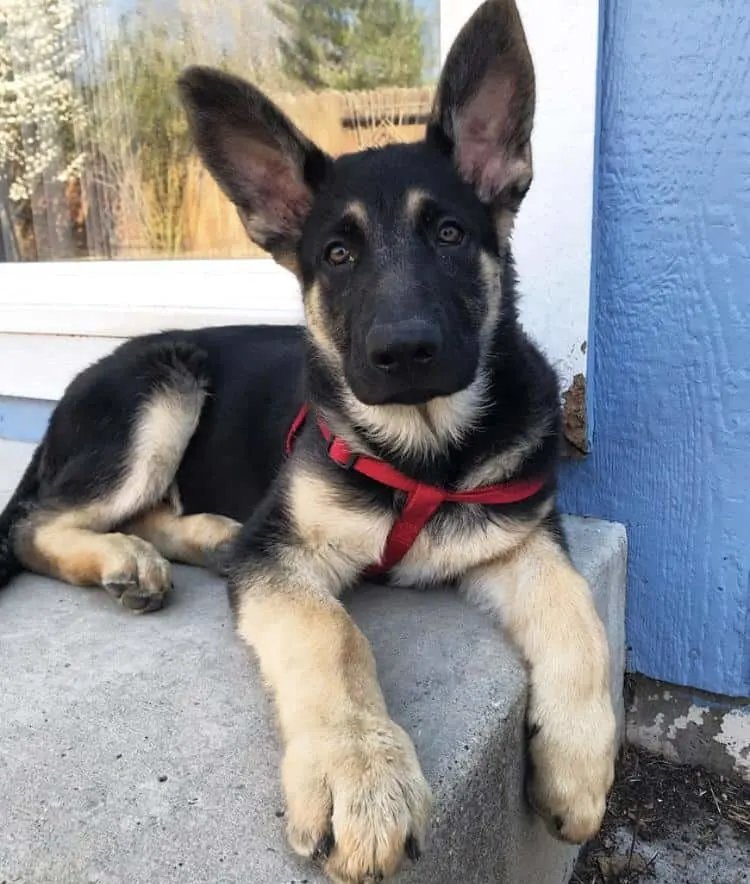
Even though you don’t likely see GSDs out walking as frequently as you may see other breeds, they are extremely popular dogs. According to AKC statistics based on the numbers of registered dogs, GSDs have been the 2nd most popular dog breed in the United States for the last 6 years.
While they are popular, they are often acquired for the wrong reasons. Unfortunately, many families and individuals choose to get a GSD based only on what they think it’s like to own one.
Their decision to own a GSD is sometimes influenced by what they may have seen in movies or TV shows.
Because this may have not been the most well thought out decision on an owner’s part, many GSDs wind up either neglected or donated to shelters.
So before you make the decision to get a GSD, make sure that you understand the commitment involved with owning one.
Below is a list of some very important points to consider before you make the decision to get a GSD.
Click Here to Jump to a Section
1. They require a lot of exercise
GSDs rank amongst the highest for dogs with the most expendable energy, and therefore the highest exercise requirements. Even as puppies, they need a lot of exercise. GSDs were bred to herd and protect livestock, and as such they accustomed to being on the move all the time. It’s part of who they are.
First of all, make sure that you are ready to go for long walks. GSDs are not the type of dog that you just step outside with for them to go potty and come back inside. They need to walk at the very least for about 30 minutes per day, but preferably for about an hour.
If you have a large fenced in yard, this is perfect for a GSD. If you don’t, it may be wise to consider fencing in your yard if possible.
This may seem like a big step, but understand that owning a GSD is a big commitment. And part of that commitment is to make sure that your GSD has ample opportunities for exercise.
Alternatively, if for any reason you are unable to take long walks and you do not have a fenced-in yard, make sure that there is a dog park available for you and your dog.
It’s common for apartment complexes to have dog parks. Public dog parks can be found in most towns, and certainly in every large city in every state. So just do your research and be prepared to meet your GSD’s high exercise needs.
Swimming is also one of the best exercises for your GSD. Take a look at this post for information about getting your GSD in the water the right way.
2. They require a lot of mental stimulation
Simply put, German Shepherds get bored easily. They like to figure things out, and they love to learn. This is where you come in. It’s beneficial for a GSD if you take the time and put forth the effort to teach it some skills beyond basic obedience.
If you have the time and you are the ambitious type, GSDs are very well suited for dog competitions. They excel in agility training, which requires tremendous intellectual focus from a dog.
But you need not aspire to compete professionally. Check around and you will find a number of often free or reasonably priced agility training courses for you and your dog. These not only mentally stimulate your GSD, but they strengthen the bond and communication between the two of you.
The point to understand here is is that if a GSD is not mentally stimulated, it will begin to get bored. And a bored GSD will turn its mental focus on destructive activities. The last thing that you want is a GSD intent on destroying things.
3. Expect some separation anxiety
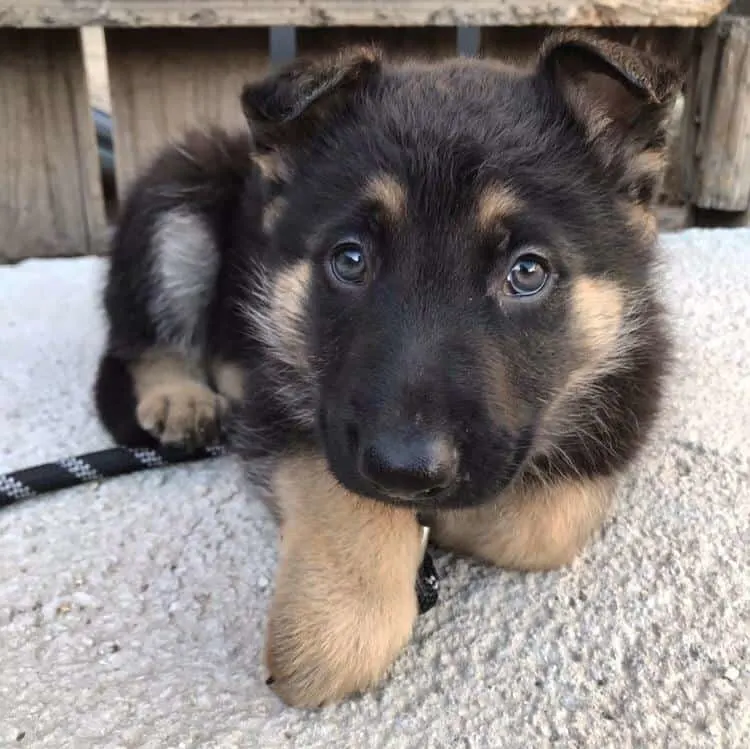
Separation anxiety is common in puppies and will most likely occur if you get your GSD from a breeder.
Your GSD will have spent the first 8 or so weeks of its life with its parents and siblings just romping around and being itself. It will be used to nursing by its mother, and companionship and play with its siblings.
This will all come to a crashing and unexpected end for your puppy when you pick it up from the breeder. So expect a little sadness. One of my GSD just whimpered all the way home, while another one just crawled into my lap and went to sleep.
The reactions may be different, but they feel it. They are walking into a brand new world so you need to be understanding of this.
Because of this, plan to keep your puppy occupied. You should not leave it alone at all after first bringing it home. The good news is that this will wear off rather quickly.
But just be aware that if your dog seems upset when you first get it, it has good reason to be. Be understanding and this will soon pass.
4. They shed…a lot
To say that a GSD sheds is an understatement if anything. If you are a first time GSD owner, you will be astonished by the amount of hair that comes as part of the deal.
Regardless of how neat and tidy you are, no matter how much you vacuum or use hair rollers or other pet hair removers around the house or on your clothing, there will be hair. And a lot of it.
I grew accustomed to friends and sometimes even strangers’ hands just brushing off dog hair off of me. While you may get used to being surrounded by hair, be prepared for a bit of a shock when the shedding begins.
And just know that you will have GSD hair on your clothes, in your home, in your vehicle, at your office, and likely in some other unexpected places as well.
5. Caring for a GSD is not cheap
GSDs are expensive dogs to own. Consider the following expenses:
- Purchase price of the dog: This cost is generally between $800-$2,000. Although this is a general estimate which assumes that you will purchase your dog from a reputable breeder and it will have already had all of its required vaccinations and received a health certificate.
- Food: German Shepherd puppies eat their fair share, and as they grow and become adults, they eat a lot more. Expect to feed your adult GSD about 30 lbs of food per month. For a high-quality brand, this will cost roughly $50-$75 per month.
- Training: This may or may not be a direct monetary cost to you, depending on whether you choose to train your GSD yourself or have it trained by a professional.
My recommendation is to always train your GSD in basic obedience by yourself, as this builds trust and communication between you and your dog.
If you choose to have your dog trained in something more advanced such as attack or protection, then I recommend enlisting a professional who will work with you and your GSD together during training.
Nonetheless, many people do elect to have their GSDs professionally trained in basic obedience. Dog training courses vary widely in price. Expect to pay anywhere from a few hundred to several thousand dollars, depending on the level of training you choose. - Veterinary care: For a puppy, during its first year these initial costs will include immunizations, spaying or neutering, and parasite control and treatment. Altogether you can expect to pay in the neighborhood of $500 for these things.
For an adult dog, health maintenance costs include an annual visit to the veterinarian for a general checkup and to receive immunizations. Assuming that all goes well, the cost should range between $50-$75 per visit.
Unexpected veterinary expenses: Just like you, sometimes your GSD will get sick or have some type of an accident. While an emergency veterinary visit for a dog is typically not as expensive as a human going to the emergency room, it can be.
Be prepared that in the unfortunate event of some type of accident, that veterinary bills can run into the thousands of dollars very quickly.
Collars, leashes, beds, toys: Many of us cannot help but view our dogs as family and treat them with the same amount of affection. And as such, many us those love to spoil those we love.
So don’t be surprised when your GSD fits right into this space. Because we are all different, estimating the cost of these things is highly individualized – and rather impossible. The sky is the limit here, depending on your tendencies and your budget.
6. They need to be well socialized
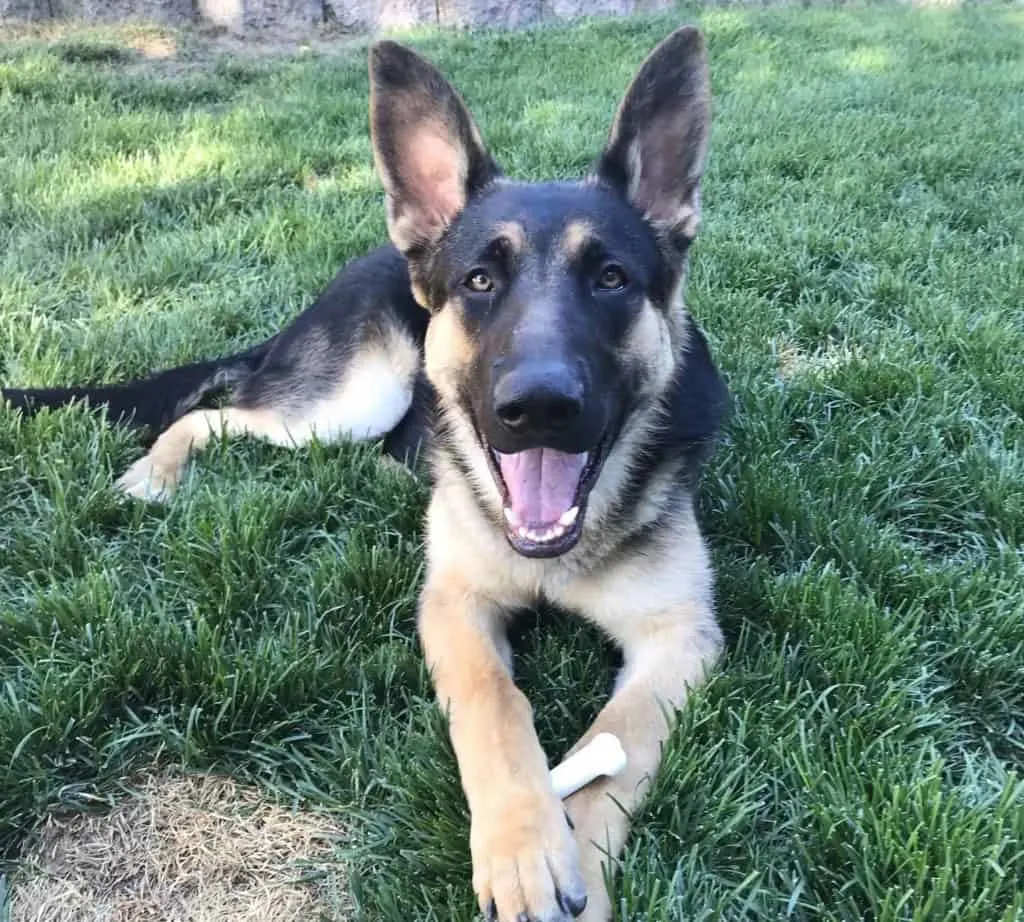
It is critical that a GSD is well socialized at an early age to avoid behavioral problems as it gets older. This means that your GSD puppy will have to go everywhere with you because it needs to experience as many positive social interactions as possible.
A properly socialized GSD will feel comfortable in new situations, around new people, and around other animals. This is important because as life goes on, your GSD will inevitably come into contact with each of these things.
And when you are dealing with a large and potentially aggressive breed such as a GSD, an improperly socialized dog can turn into a very real safety risk to you and others around your dog.
Take of the scenario of a new baby coming into a home, or a new pet. Under no circumstances would you want a GSD to be unaccepting of any of these new things. Socialization is key, and that takes time and effort.
7. They are susceptible to health problems
Just as all dogs are susceptible to a host of health problems, GSDs also have the potential for some general health problems as well as some problems more specific to the breed.
Hip dysplasia: You may have heard this about GSDs. Hip dysplasia often occurs with larger dog breeds and especially with GSDs. This condition develops because of uneven growth of the ball and socket joints in a dog’s hip.
Hip dysplasia can be a very painful condition, and it tends to develop as the dog ages. While it can be treated and managed, this requires medications, possible surgery, and in extreme cases a dog may even need a specialized wheelchair to get around.
Dilated cardiomyopathy: This is a heart disease. It causes a dog’s heart to inefficiently pump blood, and because of this necessary oxygen is not adequately distributed through its body.
This inefficiency leads to an enlarged heart, which will then lead to a number of other health problems for a dog, including trouble breathing, coughing, difficulty exercising, fluid in the lungs and even fainting.
In some cases, dilated cardiomyopathy is fatal. Even though it can be managed with medication, it is a chronic disease, meaning that it will not just disappear. It will instead require lifelong management to keep it in check.
Megaesophagus: This is a disorder in which a dog’s esophagus loses its rigidity to the point that it can no longer effectively pass food on to the stomach for digestion. It can cause vomiting and lead to malnourishment.
Megaesophagus is chronic but can be managed by feeding a liquid diet, and feeding the dog while it sits in an upright position. In more extreme cases, upright feeding will not work and necessitate the use of a feeding tube.
Osteoarthritis: This is a degenerative joint disease that causes a dog to tire easily and also incur a substantial level of pain because of inflammation in the joints. While there is no cure for osteoarthritis, it can be medicated and maintained through physical therapy.
8. Puppies love to bite
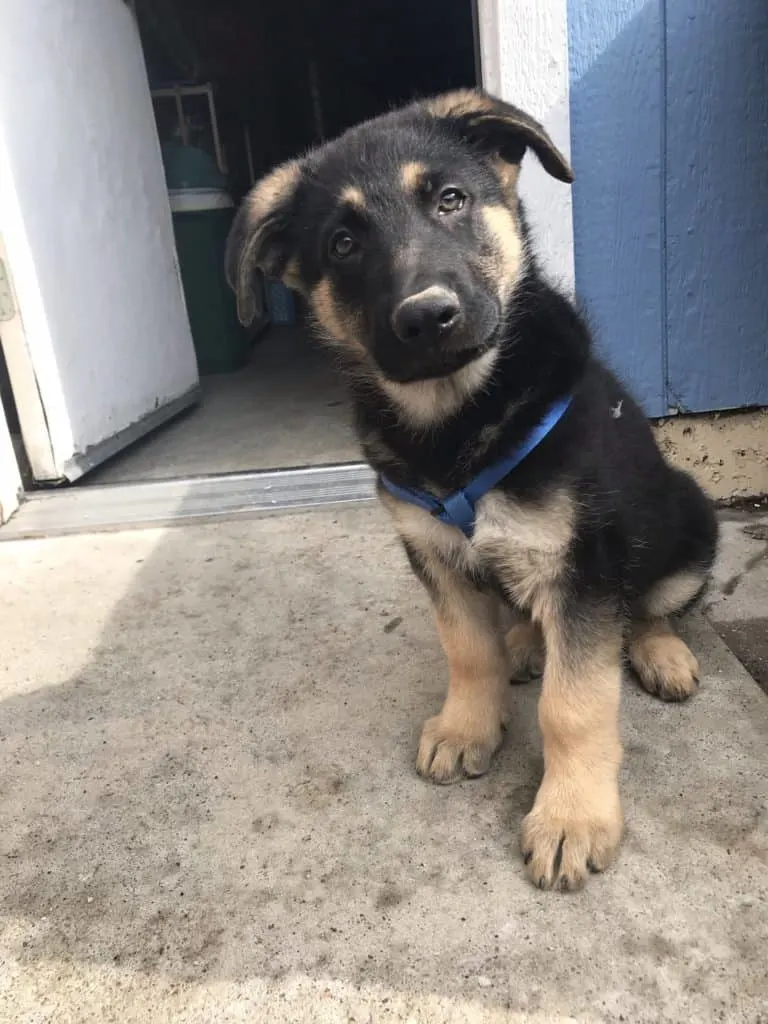
This is a phase that every GSD puppy will go through. When they are teething, GSD puppies will chew everything. And this truly means everything. They may chew on furniture, clothing, you, basically anything that is within the grasp of its mouth. A puppy’s only prerequisite for chewing on something during this time is for that something to exist!
This behavior will continue to for the entirety of the time that a puppy is teething. The cause of it is the pain and discomfort that a puppy experiences as its teeth grow out. A puppy chews on things in an attempt to alleviate this pain.
My own GSDs have chewed on everything from brand new kitchen chairs, to the track on my treadmill. One of them even got creative and decided to chew on soup cans and tear off the labels. That resulted in playing “guess what’s in the can” for the next few weeks!
A puppy has 28 puppy teeth that it needs to go through, so the chewing behavior will last up until about five months of age.
If you choose to get a GSD puppy, be prepared to have a dog that you must constantly monitor. You will also need to have the ability to stay patient with your puppy while it goes through this phase of its life.
If you ignore this behavior and allow it, the little puppy with a biting problem will likely develop into the big dog with a biting problem.
So be prepared to deal with the frustration of your favorite things being chewed on, as well as spending the proper amount of time with your puppy to make sure that its tendency to chew on everything doesn’t develop into much bigger problem down the line.
9. They need space
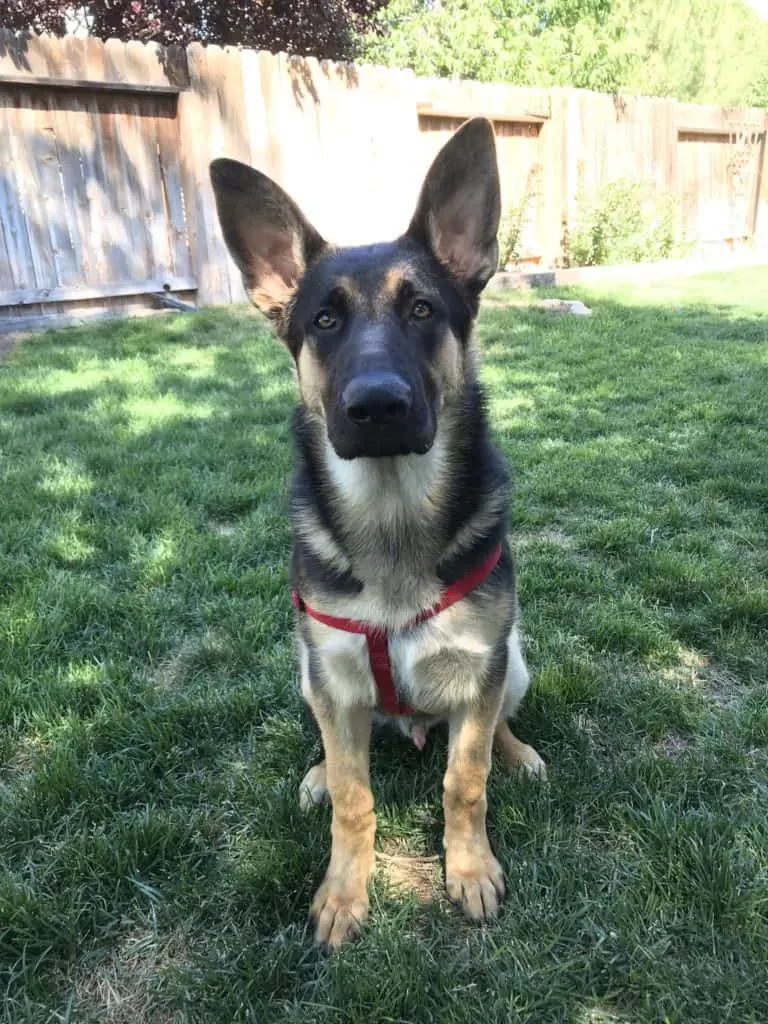
GSDs grow into large dogs that require a lot of space. When they are puppies and growing up, GSD’s are quite lanky and fairly uncoordinated. So if you provide your dog with only a confined environment and expect it to function nomally, also expect things to be knocked over and broken.
Additionally, keeping a GSD in a confined space can cause it to become destructive, anxious, or even aggressive. A dog will often exhibit these behaviors if it becomes frustrated, and confining a GSD to a small space increases the odds that it will in fact feel a lot of frustration.
So keep in mind that while it is possible to keep a GSD in an apartment if you have the time and ability to exercise it often, it’s best to consider getting a GSD only if you have a larger living space and preferably a fenced-in yard. Think of a GSD as a small human with about 20 times the energy.
10. They need your time
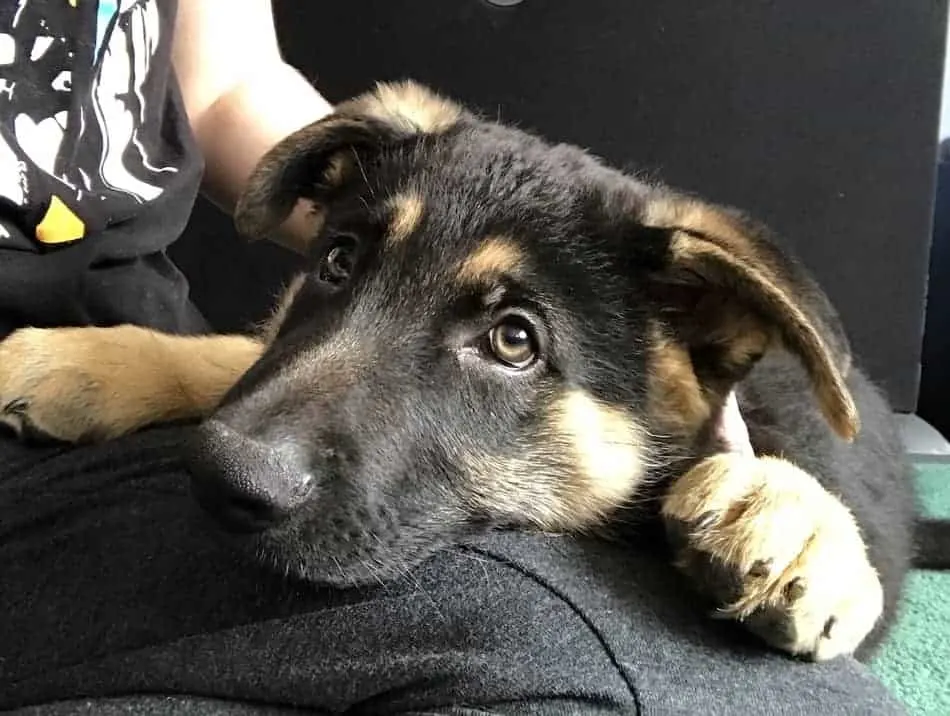
GSDs are, simply put, high maintenance dogs. They require a lot of time and attention from their owners. Proper training and socialization are necessary. They also need to be metally stimulated and require lots of affection.
A GSD does not do well being left alone, as this can cause it to feel abandoned and lead to a number of behavioral problems. Barking, continuous whining, chewing, and even biting behaviors may develop from a GSD being left alone on a regular basis.
What this means for a GSD owner is that they should not have lifestyle or employment which causes them to be absent from their dog’s life for extended periods of time with any regularity.
So if you travel frequently, a GSD is probably not for you. Boarding a GSD, unless absolutely necessary is not a viable solution or substitute for you being with your dog. So if you choose to get a GSD, be prepared to adapt your lifestyle to accommodate the newest member of your family.
11. They need their aggression kept in check
An aggressive GSD can be a monumental problem. Not only can it cause you or someone else serious injury, but it also opens you up to some very expensive legal liabilities.
A GSD is not a dog like a labrador that just kind of loves everything. While they are very caring in nature, they can also very easily turn aggressive.
GSDs are bred to be protectors. They protect you, your family, your home, your property, and even other animals. If a GSD feels that any of these things are threatened, it can very quickly become aggressive.
To manage this, it is necessary to take the necessary preemptive steps to prevent any aggression in GSD. This will require a lot of work from you in the form of consistent discipline and training.
12. They don’t play nice
While your GSD is loving and means you no harm, it will play rough. In fact, it will go tit for tat with you and allow you to up the game as high as you choose.
I’m comfortable playing with my dogs to the point where they are biting with substantial force. However, my dogs are properly trained and know their limits.
Because of their tendency to play rough, know that a full-sized GSD, if not trained properly, can become a full-sized problem. Be aware of this and know that while GSDs can be incredibly gentle and cuddly, they also have a very rough side to them, and expect some scrapes and some bruises from just from playing around.
13. You might get some looks
Just like your dog builds negative and positive associations, people also build negative and positive associations with certain breeds of dogs. Since GSDs have at times received negative press coverage and have been labeled as a “dangerous” or “aggressive” breed, this has unfortunately caused many people who do not understand the breed to be fearful of it.
I cannot count the number of times that people have crossed the street when they see one of my dogs walking in their direction – I can see the anxiety and distress written on their faces.
While some people who have no prior experience with the breed automatically associate the words “dangerous” or “aggressive” with them, GSDs can also have the opposite effect on people. Some people admire and love the breed.
For example, I once visited the Grand Canyon with my GSD, and during our walk around the South Rim I was stopped by multiple tourists throughout the day who just wanted to take pictures with my dog.
On one such occasion, a nice tourist from Japan got off of a tour bus for a group picture and even handed me $2 for a photo of her and my dog! So it’s not all bad, but prepared for the extra attention that you will receive simply by owning a GSD.
